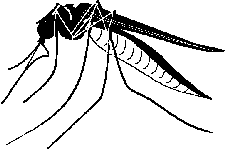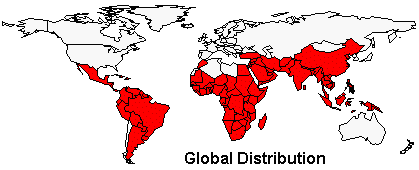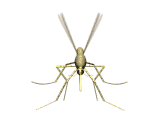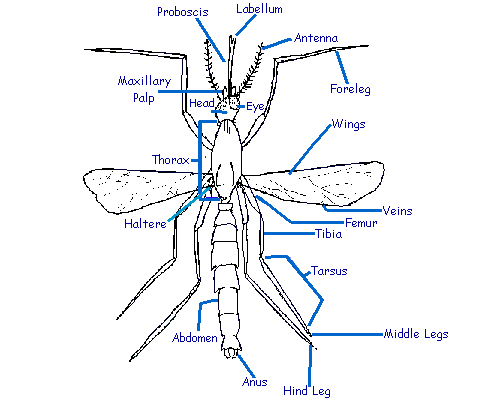|
HOME |
|
|
HOME |
|
Slap! The bite of a mosquito floods the human bloodstream with saliva. While most mosquito bites give you an itchy spot, infected mosquitoes can give you germs that cause yellow fever, dengue and malaria. Malaria is a harmful disease that causes about two million deaths a year.
In order for a person to get Malaria a female Anopheles mosquito uses its proboscis to penetrate the victim's skin. While the mosquito is biting, saliva flows into the victim's skin to ease the pain. The saliva is where the malaria is located. The Anopheles mosquito is the only mosquito to give you malaria, but other kinds of mosquitoes can give you different kinds of diseases.

Meanwhile, as the victim is just noticing the bite, the germs will start to flow into the blood stream and into the liver where the germs multiply and kill the liver cells. Then the germs travel to the bloodstream again, multiply again and kill the blood cells. At this time, the victim will have a fever and feel very weak. The germs continue attacking until the body can no longer resist.
The symptoms for malaria include fever, vomiting, headaches, and tiredness. Victims will feel cold for several hours. Then the victim's temperature will rise and they will start sweating. The victim will then keep going hot and cold for several days.
Currently malaria is in:
· India · South America · Afghanistan · Sri Lanka · Thailand · Indonesia · Vietnam · Cambodia · China · The Philippines · Central America · Mexico · Africa You do not catch malaria from
mosquito bites in New Zealand.

Female mosquitoes lay their eggs in still water. The female bunches the eggs together into a raft. Other mosquitoes lay their eggs singly. The Anopheles mosquito's eggs have air chambers to keep them afloat. Female mosquitoes can lay up to four hundred eggs if the mosquito has had a blood meal. A blood meal occurs when the mosquito bites and sucks the blood from a mammal (animal or human).
Mosquitoes find their victims by following the trail of carbon dioxide that is breathed out. Only the females can penetrate the skin of a person. The male doesn't have a strong enough proboscis.

The eggs will hatch in about 24-72 hours depending on temperature of the water. When they hatch, out comes the larva from the egg. The larva eats algae and food from the water. They have mouth brushes to filter the water and collect algae in their mouth to eat. As the larva grows, it will shed its skin and larger skin grows. As the larva approaches its moult, it begins developing the body of a pupa.
The head and thorax rest on the surface of the water as the body of an adult begins to form, when the mosquito is in its pupal stage. Males usually hatch out of their pupa form before females.
The Anopheles mosquito likes tropical or subtropical areas best for breeding. They prefer lakes or swamps for laying their eggs.
Malaria originally started in central Africa and spread to Rome where many people died in the cities. Then in 1896, an American Army doctor found out about mosquitoes that carried diseases and how to eliminate them.

Unlike some other diseases, Malaria has no cure, but you can treat Malaria to relieve symptoms. What makes Malaria so dangerous is that the parasite stays in your body forever.
If the diseases are not treated on time, then it can lead to many problems. Some of your brain cells may die. You may get anemia and if it is serious enough, it will make the person unconscious. In some cases the victim may actually die, if treatment is delayed.
If you don't want to get malaria, avoid places that are known to have a problem with malaria. You could wear long pants and sweaters, so your skin isn't exposed to the mosquito. Spraying bug repellent might help mosquitoes stay away from you, but it is not a guarantee.